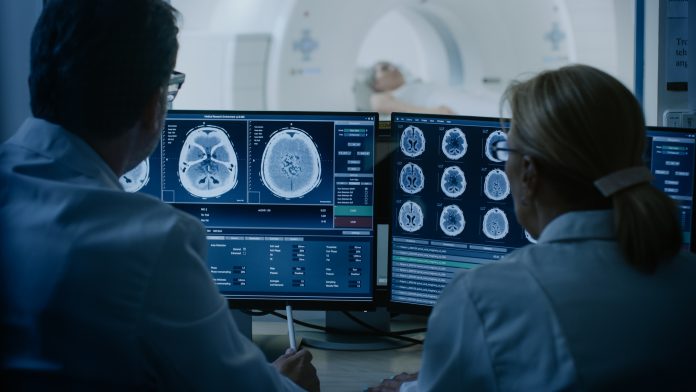Mary Hardcastle, the Vice President of Sales, EMEA at RapidAI, discusses how advanced technology is supporting more efficient stroke care, as hospitals work to meet ambitious new guidelines for care
After years of decline, new research indicates that stroke deaths may be rising again, causing providers around the world to think carefully about how we advance the next evolution of stroke care. For example, this February the NHS released ambitious new guidelines for improving stroke care in its integrated stroke delivery networks (ISDNs) – including standards for patient care, services, early supported discharge (ESD), and rehabilitation.
While setting goals for better, more efficient stroke care is certainly critical to reversing the trend and saving more lives, the reality is that achieving certain universal benchmarks along the way may not be as easy. With each hospital facing its own unique financial, operational, staffing, and geographical challenges, no two hospitals or stroke networks are operating in the exact same way – making standards of care more difficult to achieve for some hospitals over others.
Fortunately, new technologies are proving valuable in levelling the playing field and helping health systems around the world to achieve and hopefully exceed those goals.
Technology-supported workflow
Fortunately, many of the same touch points along the stroke workflow that cause the most delays are the ones that are ripe for technological support. We have spoken with physicians in the UK and across the globe on how technology and artificial intelligence (AI) can help stroke care – and in some cases, how it is already helping.
Getting patients to CT scans
One of the most significant changes in the new guidelines is in the recommended time for CT scans.
Previously, it was recommended that a patient with a suspected acute stroke receive a CT scan within an hour of that initial assessment. These new guidelines have dropped that time down to 20 minutes – quite a significant change.
This is the first instance in which AI can greatly help. A major inhibitor of getting patients to the scan is simple delays in workflow and communication. Typically, several phone calls need to be made to different people within the multidisciplinary care team. This is an incredibly time-consuming process, that can be optimized and improved with workflow tools.
For example, when a patient enters an emergency department with symptoms of a stroke, AI-based clinical decision support and workflow tools like RapidAI enable physicians and care teams to make better and faster decisions and to coordinate care throughout the patient journey. This helps activate the appropriate team members and guide the patient to the scan more efficiently. In fact, RapidAI’s technology has been shown to reduce door to CT times by 69%.
Determining transfer decisions
The second area in which technology can help streamline stroke care is in transfer decisions. Certainly not every hospital is equipped to adequately treat certain cases, and, according to the NICE guidelines, patients must be transferred to hospitals with acute or comprehensive stroke centers within four hours of a suspected stroke. This, of course, requires a great deal of coordination between the two hospitals.
With technology like RapidAI, care teams have the ability to share the patient’s information and scan with the specialized stroke units easily and immediately, with sophisticated analysis and contextual data to support faster, more accurate clinical decision-making and better patient outcomes. For example, we saw this in the DEFUSE 3 trial, in which RapidAI was used for patient selection, resulting in the successful identification and transfer of patients for late-window thrombectomy and, ultimately, significant clinical benefits.
“The same touch points along the stroke workflow that cause the most delays are ripe for technological support.”
Getting the patient into treatment
Finally, and perhaps most importantly, is the value of technology in treating the patient – both in supporting the eventual treatment decision and speeding up the process of getting them into treatment. AI can provide teams with clinical decision support data within minutes of the CT or MRI scan being taken, equipping physicians with clinically proven, advanced imaging to help in the assessment of salvageable brain tissue to determine the best treatment plan for the patient.
Workflow technology then helps align care teams and allows them to quickly administer the treatment – whether thrombolysis, a thrombectomy, or both. The guidelines recommend that the patient receive thrombolysis within 60 minutes of arriving at the hospital. Technology like RapidAI has been shown to reduce that door to needle time by 49%.
Encouraging more efficient stroke care with technology
As the NHS and their counterparts around the globe update their guidelines to encourage more efficient stroke care, it will take the support of new and emerging technologies to help providers to reach these ambitious benchmarks. Based on what we have already seen in terms of their impact over the last several years, the NHS believes these are ultimately achievable for UK health systems soon. Using these tools in practice and in clinical workflows, as well as continuously working to improve AI-powered technologies, will be critical to reaching these goals quickly and ultimately saving patients’ lives.

This work is licensed under Creative Commons Attribution-NonCommercial-NoDerivatives 4.0 International.











